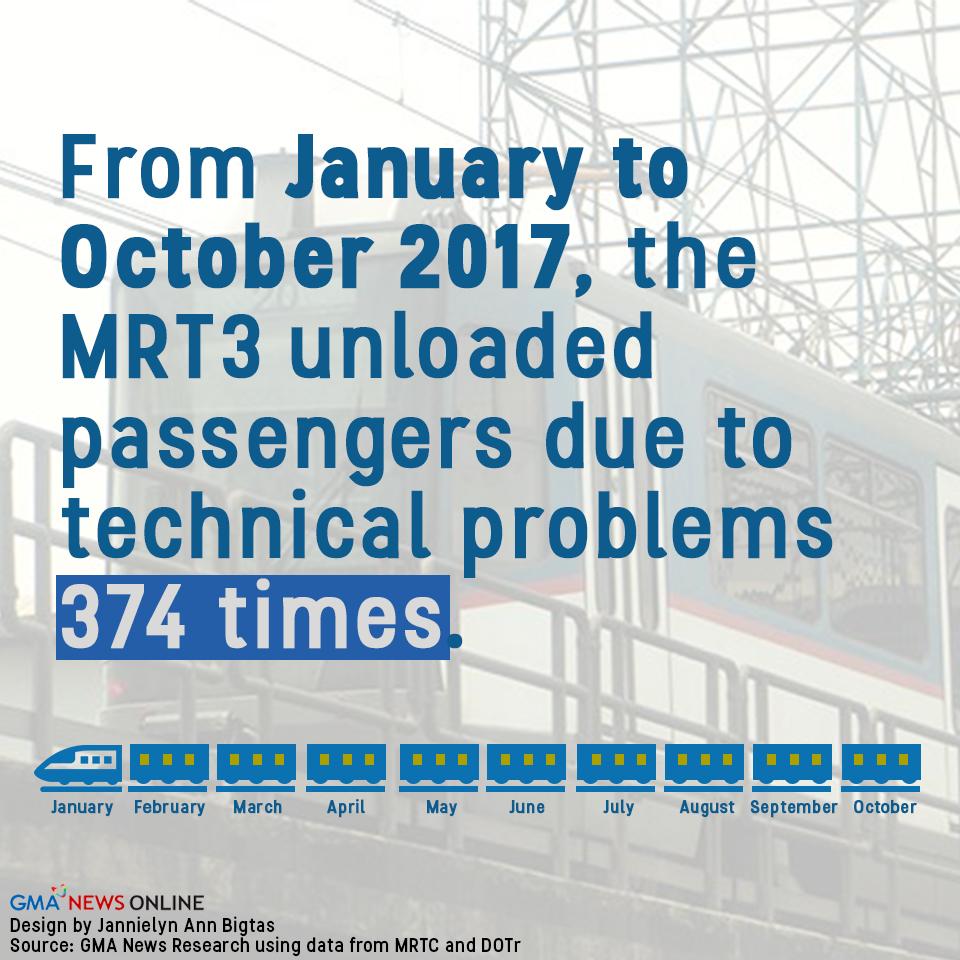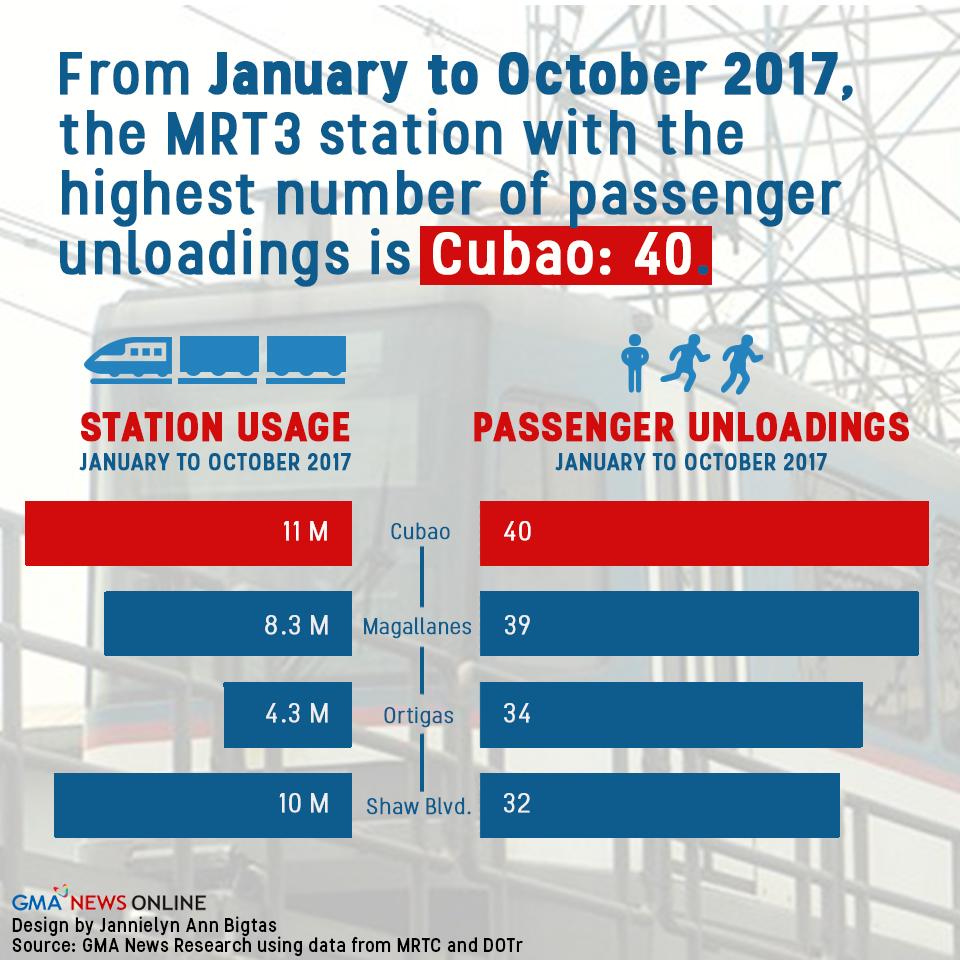GMA News | December 7, 2017
The Metro Rail Transit 3 (MRT3) was rarely out of the news this year, with the Department of Transportation's terminating the maintenance provider's contract; a fire breaking out in one train; an entire car detaching from another; and a horrific accident that highlighted a possible need for greater safety measures.
Most commonly reported in the news, however, were the so-called "glitches" and "technical problems" that stalled trains and often required passengers to get down and walk to the nearest station.
From raw data provided by the DOTr and the Metro Rail Transit Corporation, GMA News Research has compiled eye-opening statistics about the beleaguered rail system's tribulations in 2017, in particular these train stoppages.
374 times in 304 days

Technical problems forced passengers to get down from stopped MRT3 trains 374 times in the 304-day period from January to October 2017.
Rush hour woes
Many of these train stoppages happened at the most inconvenient times: morning and evening rush hours.
The hour with the highest number of passenger unloadings during the period from January to October 2017 was 5:00 p.m. to 5:59 p.m., with 33 unloadings. It is also the hour with the most riders on the MRT, with an average of 30,909.

Cubao: high traffic, most unloadings
Here's another statistic connecting the number of riders to the unloading problem: the Cubao station is the non-endpoint station with the greatest number of entries and exits in the period from January to October 2017, with 11 million passengers going through it.
It also saw the most unloadings during the same period, with passengers unloading at or near it 40 times in 10 months.

The Shaw Boulevard station, coming in fourth place for the most number of passengers (after endpoint stations Taft Avenue and North Avenue and the Cubao station), is also up there with 32 unloadings.
Most unloadings in one day
On September 16, 2017, a Saturday, passengers had to step out of trains a record eight times when the trains stopped due to technical problems.

These stoppages happened during these times:
- 5:44 a.m.: Santolan-Annapolis station (northbound)
- 7:04 a.m.: Shaw Boulevard station (northbound)
- 7:24 a.m.: Shaw Boulevard station (southbound)
- 1:10 p.m.: Ortigas station (southbound)
- 1:28 p.m.: Boni Avenue station (southbound)
- 3:28 p.m.: Magallanes station (southbound)
- 7:29 p.m.: Santolan-Annapolis station (northbound)
- 8:05 p.m.: Ayala Avenue station (northbound)
Three days earlier, on September 13, a Wednesday, there were six unloadings, the second highest daily number of the year so far:
- 7:13 a.m.: Boni Avenue – Shaw Boulevard (northbound)
- 8:15 a.m.: Magallanes (northbound)
- 8:22 a.m.: Boni Avenue (southbound)
- 9:11 a.m.: Boni Avenue (northbound)
- 2:06 p.m.: Taft Avenue (northbound)
- 7:12 p.m.: Santolan-Annapolis (southbound)
Over capacity
MRT ridership declined from 2013 to 2015 before experiencing an upswing starting in 2016.
In 2013, there were 176,058,278 riders on the MRT3. In 2014, the total dipped 4.6 percent to 167,818,336.
In 2015, the total number of riders fell even more to only 118,160,484, a 29.59-percent drop.
The number of riders has picked up again starting last year. In 2016, ridership was up 13.37 percent to 133,952,890. And in the period from January to October 2017, as many as 118,956,613 riders have tried their luck on the MRT3.
This means that in 2013, the MRT3 saw an average of 482,351 riders a day. 2015 had the smallest daily average of 323,727.
However, the MRT3 has a daily capacity of 350,000. This means that in the last five years, it was only in 2015 that the rail system was not overburdened.

 Twitter
Twitter Facebook
Facebook









































































































































































































































